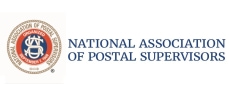Compensation for EAS Employees Falls Short—Again
By Ivan D. Butts
NAPS National President
In a letter to congressional leaders on Aug. 31, President Biden formalized his plan to provide civilian federal employees with an average 5.2% pay increase—their largest in four decades. In March, Biden first announced his pay raise plan as part of his fiscal 2024 budget proposal, recommending the most significant pay increase for civilian federal workers since the Carter administration.
August’s announcement confirms that, if implemented, federal employees will see an across-the-board increase in base pay of 4.7% and an average 0.5% boost to locality pay. In his letter, Biden said the pay raise is critical to his administration’s goal of ensuring the federal government is a model employer and can attract qualified candidates to join the workforce.
“We must attract, recruit and retain a skilled workforce with fair compensation in order to keep our government running, deliver services and meet our nation’s challenges today and tomorrow,” Biden wrote. “This alternative pay plan decision will continue to allow the federal government to employ a well-qualified federal workforce on behalf of the American people, keeping pace with prior wage growth in the labor market.” This statement by President Biden sounds eerily similar to 39 USC §1004(a):
“(a) It shall be the policy of the Postal Service to provide compensation, working conditions, and career opportunities that will assure the attraction and retention of qualified and capable supervisory and other managerial personnel; to provide adequate and reasonable differentials in rates of pay between employees in the clerk and carrier grades in the line work force and supervisory and other managerial personnel; to establish and maintain continuously a program for all such personnel that reflects the essential importance of a well-trained and well-motivated force to improve the effectiveness of postal operations; and to promote the leadership status of such personnel with respect to rank-and-file employees, recognizing that the role of such personnel in pri-mary level management is particularly vital to the process of converting general postal policies into successful postal operations.”
So, what does this announced pay raise for federal employees mean for USPS EAS employees? The maximum of the EAS pay scale will be raised to around 4%; an equivalent dollar amount will raise the minimum of the EAS pay scale to that 4%. To be clear, every federal employee’s actual pay will be raised by 5.2%—not based on targets and indicators or Corporate, Unit or Individual goals.
In contrast, EAS employees in the USPS will have the minimum and maximum pay levels raised, which does not affect the actual pay of every EAS employee. To get a raise in pay, EAS employees must navigate the NPA minefield for a hopeful PFP payout; a minefield of targets and indicators or Corporate, Unit or Individual goals designed to be moved at will by USPS leadership.
This movement has manipulated the system in such a way that it has destroyed any confidence or credibility EAS employees could have in the NPA process. The initial rigging of the NPA process began in 2009 with the USPS stealing earned PFP payouts from EAS employees. See https://www.uspsoig.gov/sites/default/files/reports/2023-01/HR-AR-11-006.pdf.
Now, we have the HERO process that has been expanded to USPS Headquarters EAS employees, which could make for a great NPA Lite commercial. We have the same manipulation and subjectivity, with less opportunity for pay. The actual pay increase that can be received in the HERO format is 4%.
Each August, the U.S. president must issue an alternative pay plan that determines if an “economic emergency” precludes much more significant automatic increases in locality pay from taking effect, per the Federal Employees Pay Comparability Act. The step has been largely perfunctory since the law was enacted in 1990. What about USPS EAS employees, Mr. President?
In solidarity …
1727 King Street, Suite 400
Alexandria, VA 22314-2753
703-836-9660 (phone)
703-836-9665 (fax)
Website by Morweb.org
Privacy Policy Copyright 2023
